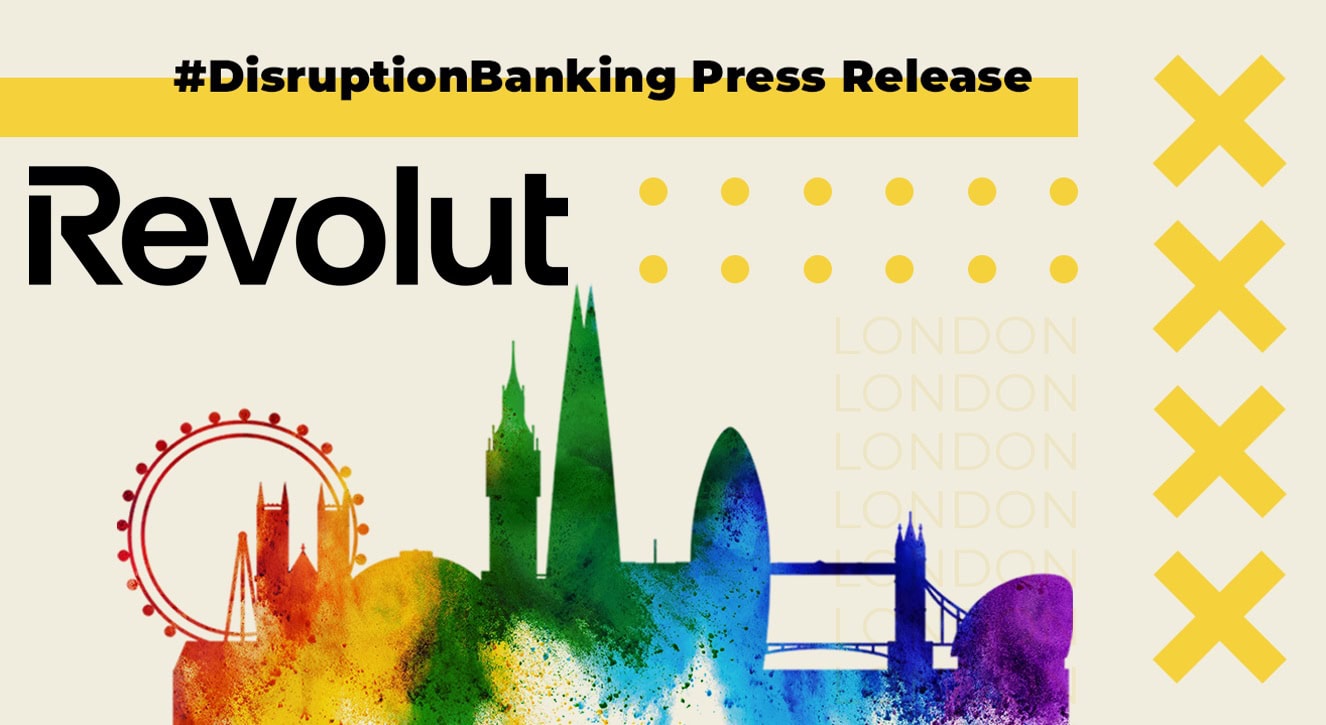It started the year so well. Bitcoin opened in January at $46,000 with many commentators still expecting the leading cryptocurrency to charge forward till $100,000. At least. However, as we saw with our Crypto Hodler story last summer, things are rarely as good as they seem. 2022 was the year where even institutional investors got their fingers burned. Retail investors like Jon had almost no chance as bitcoin lost more than 60% of its market value in 2022. Almost a record drop in value for the leading cryptocurrency.
Staring at the leftovers of your festive revelry, it can be hard to remember all the individual knocks that bitcoin has felt this year. Bearing in mind the knocks that it took since it started trading, it’s also getting a little cliché. Bitcoin and cryptocurrencies being volatile? Not performing as expected? Isn’t this all getting a bit repetitive?
Let’s face it, 2022 was a massive s**t-show for bitcoin. In fact, it was a horrendous year for investors of nearly any asset class. Even in China the lack of investment opportunities has led people to become desperate. And maybe that’s the best way to explain investment behavior in 2022? A bit desperate…
Bitcoin losses in January at 20%
Bitcoin outperformed most of the leading hedge fund managers in 2021. It rose from $29,329 to $46,211 exactly a year later. A very good alternative investment. Providing a return that continued to entice both retail and institutional investors to keep investing throughout 2022.
Is 'El Hodlador' all it is made out to be? Is Nayib Bukele the World's Coolest Dictator? Is he using crypto to benefit society or himself?
— #DisruptionBanking (@DisruptionBank) February 1, 2022
Find out more in our latest feature about what is going on in #ElSalvador#Hyperbitcoinalization #CryptoDictator https://t.co/V0GB3278jg
The situation in El Salvador dominated a lot of the news into 2022. However, the huge drive to own bitcoin had stopped. CNBC suggested that the biggest high for interest in cryptocurrencies was actually in November 2021. There was some interest in other cryptocurrencies, of course, that diluted the appetite. But ultimately though the Federal Reserve made the biggest impact. With rates moving off zero and stories of the Fed looking to reduce its balance sheet, markets were scared. And so was bitcoin. It collapsed by more than –$7,500 from the previous month by the end of January.
The mentions of “crypto winter” were back, but there were also some who suggested it would be more of a “crypto ice age”. Many investors wished they had taken heed.
Bitcoin makes recovery in February
Investors who are new to cryptocurrencies all have a love-hate relationship with bitcoin. In February this continued. Some analysts even pointed at a possible $53,000 target price for bitcoin. Which may have actually happened, but for a certain Vladimir in Moscow who had different plans.
Bitcoin as a hedge for geopolitical turmoil became a myth in February. The concept of digital gold taking over actual gold in the future as a safe haven in times of distress was shaken to its core by Russia’s invasion of Ukraine. The world prepared for geopolitics becoming the driver of both traditional and crypto markets. Inflation took a backseat. For now.
Interestingly bitcoin recorded a rise from January of over +$5,500 in February. The crypto winter appeared to be on hold.
The Crypto Turbulences of March
Pressure mounted for cryptocurrency exchanges to make a stand against the warmongering Russian President in March. Coinbase went ahead and blocked the addresses of 25,000 wallets related to Russian individuals or entities.
At the same time El Salvador’s government spoke of issuing so-called “volcano bonds”. Half the proceeds were to be invested in bitcoin whilst the rest went to constructing a “bitcoin city” at the foot of a volcano. The hope was to attract “bitcoin whales” rather than retail investors. However, the plans to make El Salvador the financial centre of central and south America, are still in process almost 10 months later.
Next came the Super Bowl in the U.S. FTX, Crypto.com, Binance, as well as Coinbase all placed advertisements in and around the event itself. But it was Matt Damon who took centre stage, plugging Crypto.com, and later being ridiculed for his part in the pumping by SouthPark. The use of celebrities and influencers to promote cryptocurrency projects seemed to know no end.
South Park DESTROYS Matt Damon's https://t.co/yye0jLsJV8 ad in season premiere 🤣 pic.twitter.com/6W0yaDzBmJ
— Altcoin Daily (@AltcoinDailyio) February 4, 2022
Invasion, Inflation and South American economics aside, bitcoin kept rallying. Commentators started to plan a target price of $65,000. In March, the value of bitcoin grew by +$2,300. What crypto winter? Nobody could have predicted that bitcoin would lose more than 60% in 2022 back in March.
Crypto Spring comes in April
All eyes were back on Binance in April as the largest cryptocurrency exchange in the world took on Reuters. The media company alleged that Binance was doing more than it should to build ties with Russian government agencies. CZ, the man at the helm of the head-office-less cryptocurrency exchange Binance was quick to respond. Even asking the Financial Times to interview him to help make Binance seem ‘cleaner’.
Fortunately, there was lots of distractions in April with the Bitcoin 2022 Miami conference taking place in the U.S. crypto capital over 4 days. Headlined by the President of El Salvador, Peter Thiel, Michael Saylor, and many more, the event provided a welcome distraction for investors. It was also a moment when bitcoin looked like it was going to continue its upward spiral.
Just as everyone was lauding the El Salvador experiment, the Central African Republic approved bitcoin as legal tender. With low internet penetration amongst its population (about 4%), the story came as a surprise.
The move by the Central African Republic (CAR) to adopt #Bitcoin as legal tender has left experts pointing to financial criminals as the likely winners. https://t.co/2YaJgZ0sLl
— #DisruptionBanking (@DisruptionBank) September 6, 2022
But bitcoin eventually started a downward spiral. It lost almost –$8,000 from its high in March. And things were about to get serious.
Crypto Winter arrives in May
Things started well in May. Coinbase issued the results of a survey suggesting that 33% of UK consumers have previously, or still, own cryptocurrency. This was up from 29% in October 2021. It was also the month that saw FTX’s Sam Bankman-Fried (SBF) speak at the International Swaps and Derivates Association Annual Conference in Madrid. SBF spoke of how FTX sought licenses before offering products. How FTX has a strong relationship with traditional financial institutions.
Neel Somani quit his job as a quantitative researcher in the commodities group at Citadel, and took a huge pay cut to join Terra. A few weeks later, the #crypto lost over 99.9999% of its value. #LUNA https://t.co/s97fRPgKI9
— #DisruptionBanking (@DisruptionBank) May 17, 2022
Then something strange happened. A stablecoin called Terra, which should have been pegged to the dollar, collapsed. It wiped out $40 billion in total market value and destabilized its sister token Luna. The founder, Kwon, is still at large, with South Korean authorities still hoping to detain him. The size of the collapse was unprecedented in crypto, and as a result bitcoin’s price took a further tumble.
Next the Deputy Governor of the Bank of England stated that digital assets have “no intrinsic value”. European Central Bank President Christine Lagarde said that cryptocurrencies are “based on nothing”. The Head of Spain’s central bank added how “the jury is still out” when it comes to cryptocurrencies.
Bitcoin continued its slide losing almost –$6,000 from where it started the month. Interestingly, Sam Bankman-Fried became more of a celebrity than the President of El Salvador by the end of May. In fact El Salvador almost permanently dropped out of people’s newsfeeds after Terra Luna.
June – Time for a Break
Things are starting to snowball at this point. The market desperately needed a break after the turmoil of Terra Luna. However, questions about the liquidity of companies like Coinbase and BitPanda are raised instead. BlockFi is in trouble. Layoffs ensue.
First it was the Winklevoss Twins, their Gemini Trust Co., and a top 10 cryptocurrency exchange to boot, had to cut 10% of its workforce. Then Bybit, Coinbase and BitPanda cut staff. Then there were many more.
Interestingly, Andreessen Horowitz kept raising crypto funds even as markets were turning, collecting $4.5 billion into a fund dedicated to digital assets. At the same time bitcoin mining goes mainstream at Fort Worth City Hall in Texas. And SBF flexes his muscles at FTX by bailing out BlockFi.
Another company to be affected by the turmoil was Binance. The leading cryptocurrency exchange halted withdrawals of bitcoin for several hours after cryptocurrency lender Celsius blocked customers from removing funds.
Could it get worse? It did. With bitcoin dropping like a stone, the thought of it hitting $21,000 has the likes of Michael Saylor and his team at MicroStrategy worrying about a potential margin call. Three Arrows Capital was also mentioned in the news.
The Crypto Winter is well and truly here. Bitcoin slides a staggering –$11,750 by the end of June. June was the first month when bitcoin lost more than 60% in 2022.
No more picnics in July
Bitcoin is worth less than $20,000 at this stage, less than half of its value at the beginning of January. Fear is palpable in the market. Market participants have been aware of the volatility of cryptocurrencies. But the collapse in value affected so many more investors this time. It seemed to hit harder than it had in earlier crypto winters. There are no shortcuts to financial freedom, and there are no picnics either.
Three Arrows Capital or 3AC, a leading cryptocurrency hedge fund based out of Singapore, filed for bankruptcy. BlockFi, Genesis and FTX are exposed to the hedge fund, amongst others. The firm had managed about $10 billion in assets in March 2022; leading some observers to suggest that it was 3AC that is really responsible for the onset of the crypto winter.
A week later Celsius Network filed for bankruptcy. In May the company had stated that it was managing $11.8 billion in assets. By the time of its bankruptcy this sum had shrunk to $4.7 billion, but it was a further sign that things were heading in the wrong direction for bitcoin.
Undoubtedly one of the most #disruptive stories of 2022. How much did #Celsius have to do with the prolonged #CryptoWinter we are facing? https://t.co/lXNtMKyHBI
— #DisruptionBanking (@DisruptionBank) December 27, 2022
By the end of July things may have looked a little better. There was even the hint of a ‘thawing’ on the horizon. Cathie Wood might have finally dumped all her Coinbase holdings, but SBF and FTX were on a buying spree.
Gary Gensler, the head of the SEC, started to become ever more vocal, especially when it comes to Coinbase and the interpretation of a digital token. And Michael Saylor of MicroStrategy continued his drive for hyperbitcoinization.
Many old-school HOLDers will be disappointed with the institutionalization of #bitcoin. So why is CEO of MicroStrategy, Michael #Saylor, calling for government intervention? #crypto #HODL #Cryptocrash https://t.co/XrWM3kYzeM pic.twitter.com/nKgwyKIpUm
— Tim Tolka (@TimTolka) July 4, 2022
Bitcoin recovers by more than +$3,300
The Calm before the Storm in August
Amazingly, apart from a few predictions and a handful of asset managers eyeing up the leading cryptocurrency there wasn’t much to report in August. Except for Coinbase who noted a further plunge in profits for Quarter 2.
By the end of the month bitcoin back down by –$3,250
Focus on Metaverse in September
The spend on sporting events by cryptocurrency-related businesses was again in the news in September. With the World Cup approaching, and the Formula 1 season ending, the advertisements and sponsorship deals keep on coming. There was also the small matter of the ethereum ‘Merge’ which drove interest away from bitcoin for a few days.
Crypto is at a crossroads, as Gary Gensler's #SEC fights the #CFTC for jurisdiction over crypto. Meanwhile, economists and businesspeople fear the victims will not be white-collar criminals but rather U.S. businesses and American competitiveness. https://t.co/yFEnQmtK5l
— #DisruptionBanking (@DisruptionBank) September 16, 2022
Gary Gensler continued to make headway amongst the more decentralized of investors with an op-ed in the Wall Street Journal about how crypto is treated like any other capital markets asset at the SEC.
Bitcoin dropped by just over –$600 in September, a very calm month for the embattled cryptocurrency. It’s worth noting that in September bitcoin lost more than 60% in 2022 for the second time.
Settling in for Conferences in October
A month before the biggest fintech festival in the world and Singapore is being scrutinized. It’s where Terra Luna’s Kwon fled to. It’s where Three Arrows Capital (3AC) had been operating. But it wasn’t going to be the place where Binance set what it considers its roots down. Binance has been strongly sticking to Middle Eastern jurisdictions this year instead. So much so that talk started about Saudi Arabia wanting to be a crypto hub.
The conference season is in full swing with SIBOS in Europe followed by events in Singapore and Hong Kong in November.
Bitcoin surged a little and increased in value by +$1,000 in October.
November Surprises
The market had finally understood some of the disasters that had peppered May and June 2022. There was some stability, and, while bitcoin languished near to $17,000, there was hope of a bounce back. Wasn’t there?
The surprises were about to return. This one might go down as the biggest case of fraud in the history of the U.S. as well as crypto and bitcoin. SBF’s FTX collapsed. Spectacularly.
Executives were aware of the clear #conflicts of #interest of having a #marketmaker and a #tradingfirm under the same roof, even in the early days. But those same executives revealed that Alameda was using FTX customer deposits to trade.https://t.co/6l0dfgd1Ni
— #DisruptionBanking (@DisruptionBank) November 14, 2022
Following on from the collapse of FTX, BlockFi then filed for bankruptcy too. The embattled CEO of Binance, CZ, was also in trouble. Mazars, a global auditing firm, turned round and flatly refused to check the books at Binance. Even while CZ tries to do what he can to rally the crypto troops. His huge personal wealth takes a hit. He loses billions before FTX, after FTX, and he will probably lose more next year too.
Ultimately, though, FTX has taught us one thing. Yes, crypto is a volatile asset, we knew this. Yes, do not invest more than you can, we also knew this. Do your research, we were doing this also. And so were the Ontario Teachers Pension Fund, Coinbase, Temasek, SoftBank, Sequoia Capital, Third Point Ventures, Paul Tudor Jones II, Binance Labs, and a whole host of institutional investors. If all these investment veterans managed to get it so catastrophically wrong, what chance did the little retail investor actually have? We learnt that even institutional investors get it dramatically wrong. And not just when Gamestop happens.
Bitcoin slumped by more than –$3,000, bringing it to new lows in 2022. November saw bitcoin lose more than 60% in 2022 for the third time since January.
What I want for Christmas
Ideally an England win at the World Cup I hope you are saying. Failing that a turn in the fortunes of your bitcoin investment. Unfortunately, neither of these occurred this December.
Elsewhere Pythagoras Investment Management LLC had two crypto funds that gained 7% this year. Brevan Howard Asset Management’s digital currency fund only lost about 5% this year. All this at a time when bitcoin lost over 60% of its value. Not to mention Tesla stock that did even worse. Both of these funds might be worth following into 2023.
This month so far bitcoin is down by over –$400.
As it stands today, nearing the end of the 28th day of December, bitcoin is clinging on to the $16,670 mark. A few years ago, this would have been considered a great time to buy, especially as bitcoin lost more than 60% in 2022. 60% it may regain in 2023. But today’s investors are a little more battle-hardened than the ones that came before. No more bitcoin FOMO for them. For now.
Bitcoin loses more than 60% in 2022
It’s easy to blame that friend of yours who’s been hodling for many years, or that latest piece of crypto advertising by Matt Damon. But in essence our choice to invest is our own. There are several culprits of the ongoing Crypto Winter no doubt. You could vent your frustration at any of the following: Kwon, Bankman-Fried, Su Zhu, or Kyle Davies. You can feel anger at the delayed reaction of industry regulators like Gensler.
The best thing to do either way right now is to hodl what little you have left.
As for a forecast for next year. Any forecast for 2023 would have to be comparable to that of the Former President of Russia yesterday. Medvedev suggested that the UK would rejoin the EU amongst other things. Elon Musk would be the President of the U.S. How about that for a bit of market volatility?
Happy New Year! And Happy #Hodling
The Editorial Team at #DisruptionBanking















